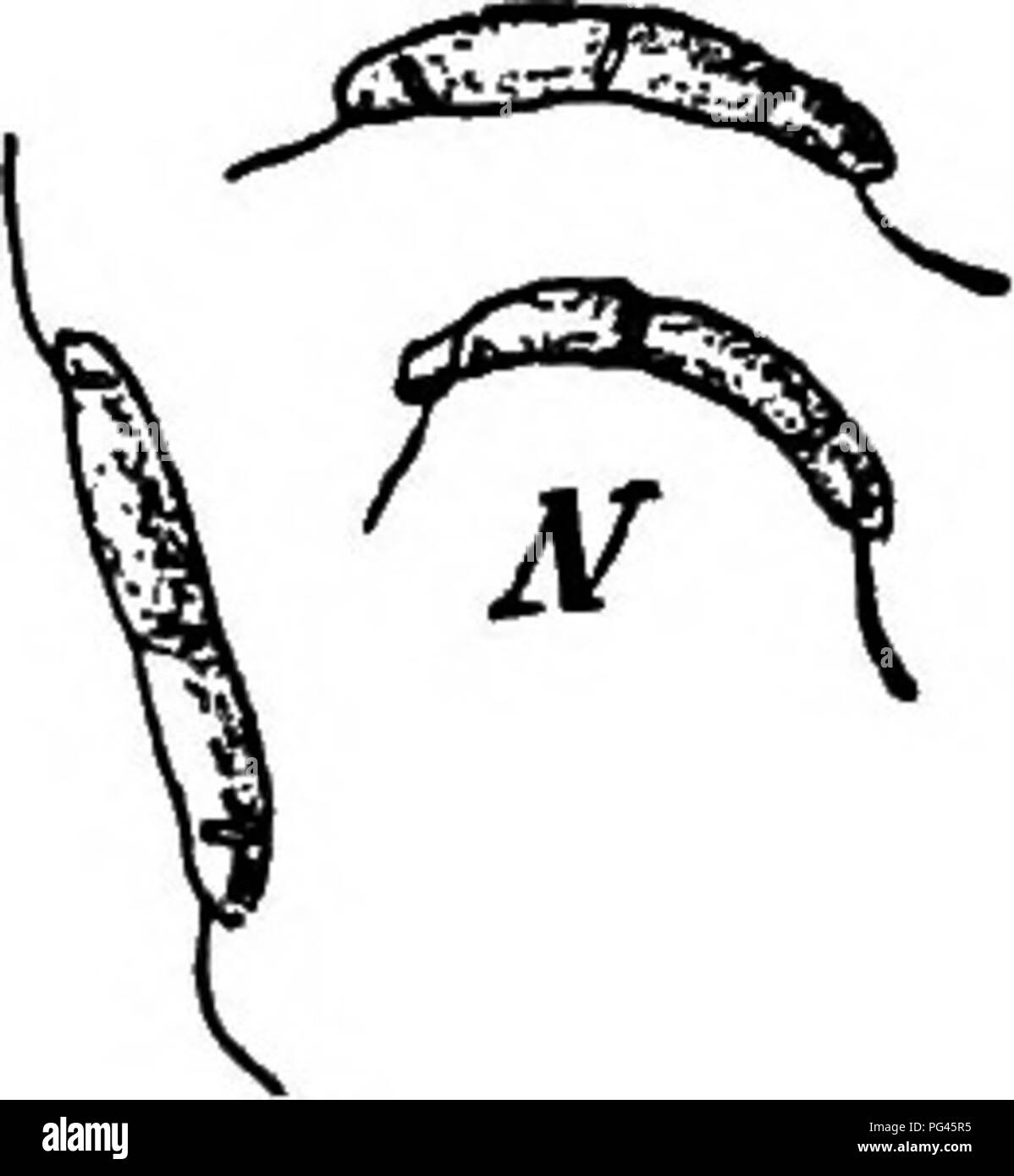. The fungi which cause plant disease . Plant diseases; Fungi. 516 THE FUNGI WHICH CAUSE PLANT DISEASE H. oryzae Miy. on rice; H. notha Sacc. & Br. on Juniperus leaves; H. togniniana Poll, on Cycas. H. foliicola (Berk.) Fcl."' Pycnidia epiphyllous, bro^Tiish-black, subglobose, subelliptic or irregular; conidia elliptic to clavate, obtuse, 3 to 5-septate; conid- iophores filiform, radiating. On Juniperus and Pine. Cryptostictis Fuckel (p. 515) Pycnidia erumpent, globose or depressed, ostiolate; conidia elongate, 2 or more septate, subapically appendiculate with a long hyaline bristle.

Image details
Contributor:
Central Historic Books / Alamy Stock PhotoImage ID:
PG45R5File size:
7.1 MB (127.4 KB Compressed download)Releases:
Model - no | Property - noDo I need a release?Dimensions:
1518 x 1646 px | 25.7 x 27.9 cm | 10.1 x 11 inches | 150dpiMore information:
This image is a public domain image, which means either that copyright has expired in the image or the copyright holder has waived their copyright. Alamy charges you a fee for access to the high resolution copy of the image.
This image could have imperfections as it’s either historical or reportage.
. The fungi which cause plant disease . Plant diseases; Fungi. 516 THE FUNGI WHICH CAUSE PLANT DISEASE H. oryzae Miy. on rice; H. notha Sacc. & Br. on Juniperus leaves; H. togniniana Poll, on Cycas. H. foliicola (Berk.) Fcl."' Pycnidia epiphyllous, bro^Tiish-black, subglobose, subelliptic or irregular; conidia elliptic to clavate, obtuse, 3 to 5-septate; conid- iophores filiform, radiating. On Juniperus and Pine. Cryptostictis Fuckel (p. 515) Pycnidia erumpent, globose or depressed, ostiolate; conidia elongate, 2 or more septate, subapically appendiculate with a long hyaline bristle. It differs from Hendersonia chiefly in spore characters. A small genus of eleven species, chiefly sapro- Fio. .357.—Cryptos- phytes. tif staTbaS: ^' ^- cynosbati (Fcl.) Sacc. and C. caudata (Preu.) Sacc. occur on the rose, the former on the fruit and branches forming wounds. Hendersonula Speg. (p. 515) Stroma black, irregular; ostioles punctiform; spores ellipsoid, several-celled, colored. In part =Plowrightia. A form on the plum=Plowrightia morbosa. See p. 218. Sphserioidacese-Phseodictyae (p. 480) Conidia dark, muriform, oblong to ovoid, rarely radiate or cruciate. Ket to Genera of Sphsrioidacese-Phseodictys Pycnidia separate Conidia not reticulate Pycnidia on bark, erumpent 1. Camarosporium, p. 517. Pycnidia on wood, superficial 2. Cytosporium. Conidia reticulate 3. Endobotrya. Pycnidia merely locules in a stroma 4. Dichomera.. Please note that these images are extracted from scanned page images that may have been digitally enhanced for readability - coloration and appearance of these illustrations may not perfectly resemble the original work.. Stevens, Frank Lincoln, 1871-1934. New York : Macmillan